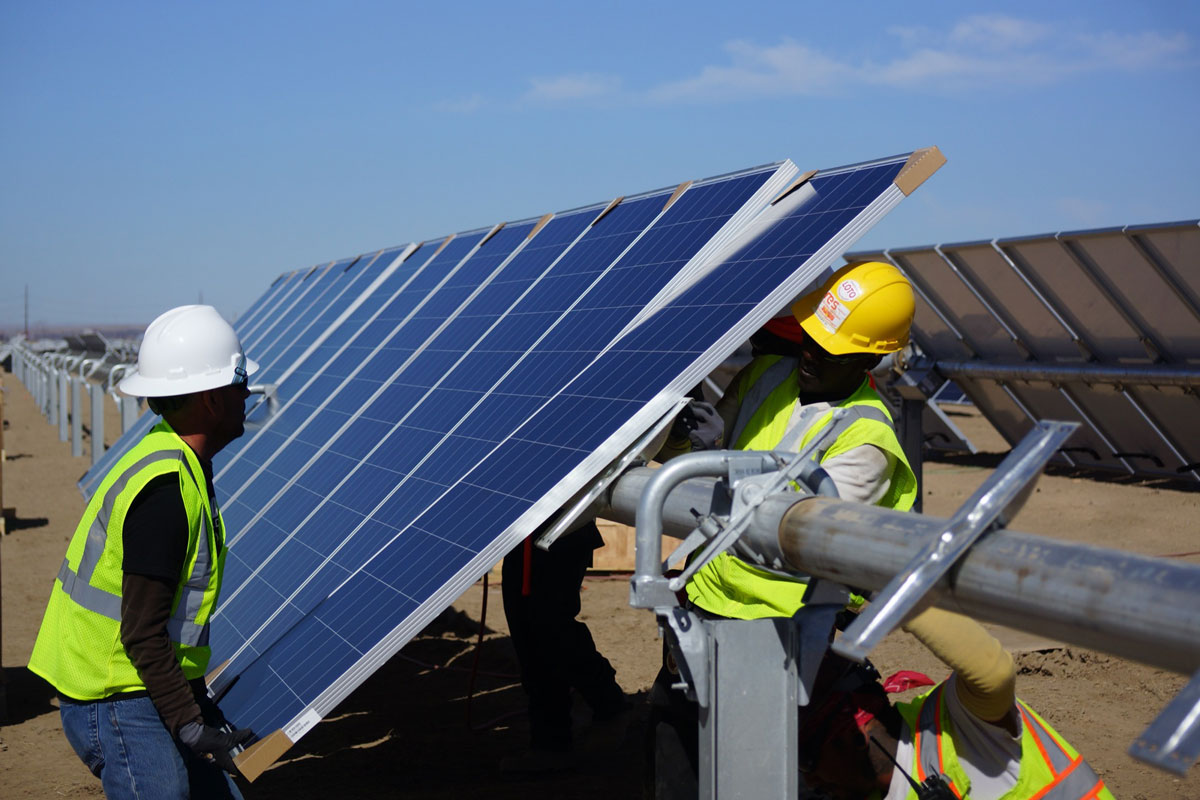Solutions
Our passionate and experienced people deliver successful clean energy projects globally.
Technologies
Driving a clean energy future through state-of-the-art renewable technologies.
See all technologiesResources
Browse our latest resources, including company updates, customer stories, industry insights, and research reports.
See all resourcesCareers
Join a collaborative team of passionate individuals who engage in meaningful, stimulating, and world-changing work.
Learn moreAbout RES
We live our mission, celebrate the people making it happen and transform the way the world produces and consumes energy.
See about usOur offices
Like our business, we’re truly global – but proudly local. Find contact and location details for every RES office.
Contact usDe-risking clean energy construction: Four strategies for project success
by RES | Aug 21, 2025 | Reading time: 3 min

By Bart Geleynse, Senior Vice President, Business Development – EPC
The renewable energy sector is growing at an unprecedented pace, but with this growth comes increased complexity. Project owners are handling increasingly unpredictable supply chains, tight labor markets, evolving technologies and shifting regulations. In this environment, one thing is certain: success isn’t just about building more projects; it’s about building projects that perform as planned and are delivered on time and within budget.
De-risking engineering, procurement and construction (EPC) isn’t just a benefit; it’s essential for gaining a competitive edge.
Today’s risk landscape
Across the U.S. market, renewable energy developers and investors are encountering:
- Grid constraints and interconnection delays that hold projects back from commercial operation.
- Supply chain vulnerabilities, from limited materials to transportation bottlenecks.
- Labor shortages and a lack of renewable-specific training programs.
- Regulatory shifts and permitting delays at multiple levels of government.
- Uncertain incentive structures, which can evolve mid-project.
- Political volatility that can reshape funding priorities overnight.
- Fragmented project scope, where multiple contractors operate without a single point of accountability.
- Technology integration risks, especially when scaling up newer, less proven solutions.
Each of these risks can individually impact timelines or budgets. When combined, they create a complex web of uncertainty that can undermine even the most promising project.
The risk of fragmentation across the lifecycle
One of the more pervasive risks in renewable energy construction is the fragmentation of responsibilities across the project lifecycle. Handing off work between development, construction and operations teams often leads to gaps in oversight, duplication of effort and costly missteps.
In practice, even minor misalignments, such as a delayed permit, a procurement error or a missing design detail can lead to significant delays and financial losses. Without coordinated oversight, project owners face unnecessary exposure to risk.
Strategies to de-risk construction
1. Invest in workforce and safety
The most reliable way to prevent costly incidents and delays is through a skilled, safety-conscious workforce. Investing in apprenticeships, trade schools and community workforce programs helps build talent pipelines for the future. RES’ Department of Labor–certified apprenticeship program is one example of how we’re addressing renewable-specific labor needs while fostering a strong safety culture in every project.
2. Align the lifecycle from day one
Success starts with early engagement. RES brings our development, engineering, construction and operations together from the outset to help clients anticipate and address challenges before they become costly problems that could impact permitting or procurement. With visibility into a client’s pipeline, we can identify opportunities for alignment early, strategically allocate resources, and take a portfolio-level approach to de-risking.
Surprises are expensive; this integrated view helps set the stage for more predictable, efficient project delivery. Learn more about why project alignment is the next frontier in renewable energy.
3. Establish clear roles and accountability
When multiple parties are involved in decision-making, it can slow down and cloud accountability. To keep projects on track, we need to define ownership at every step and ensure that central coordination is in place, whether that involves in-house resources or a trusted partner. We’ve seen how strong central coordination can reduce rework and speed up delivery.
4. Strengthen procurement planning
Given today’s supply chain challenges, integrated procurement planning is crucial. Engaging early with suppliers helps secure vital components and crystallize delivery timelines. Dual-sourcing strategies and flexible specifications lower dependency risks, while designing with incentive eligibility in mind ensures projects stay financially feasible even as policies evolve. For example, ensuring equipment choices don’t undermine compliance with tax credit requirements. See four strategies to optimize your supply chain.
Building for speed and predictability
In today’s market, speed to market matters and renewables are already among the fastest sources of new generation to deploy. But speed alone isn’t enough if projects hit delays, face rework or fail to perform as planned. The true competitive advantage lies in delivering both quickly and reliably, even under challenging conditions.
De-risking doesn’t mean removing uncertainty; it means establishing the structures, processes and partnerships that allow projects to move fast while staying on track. In a complex industry, project owners who focus on alignment, integration and proactive risk management will set the standard for the field.
Join us at RE+ to discover how RES can help you reduce risks in your next renewable energy project.

